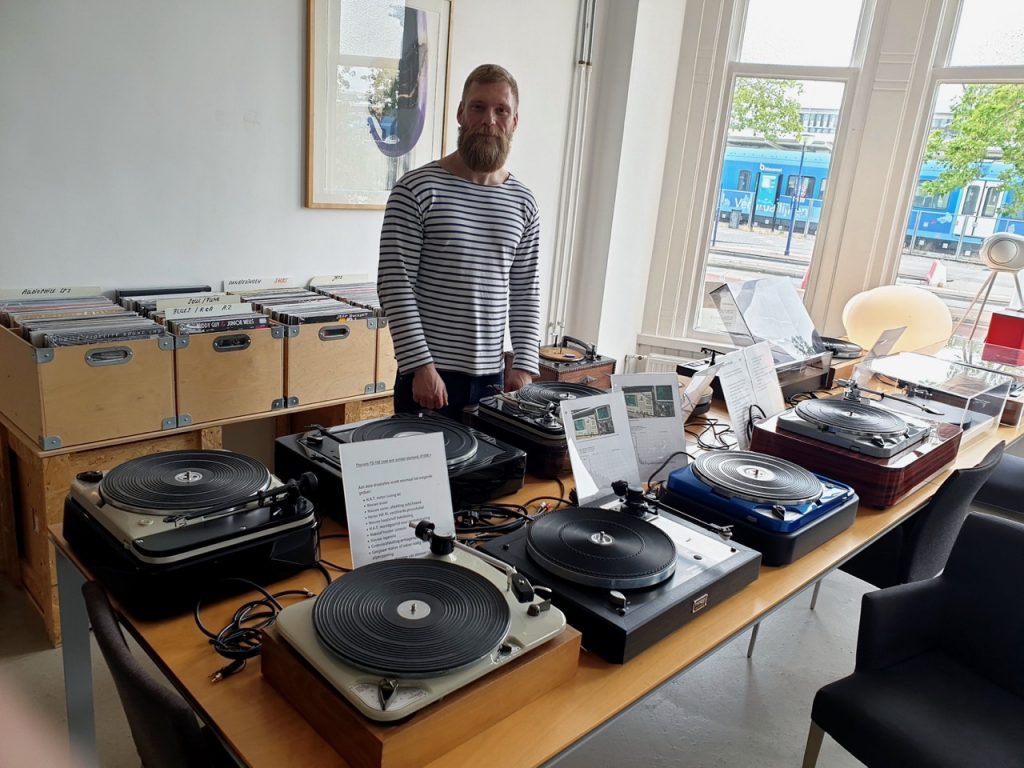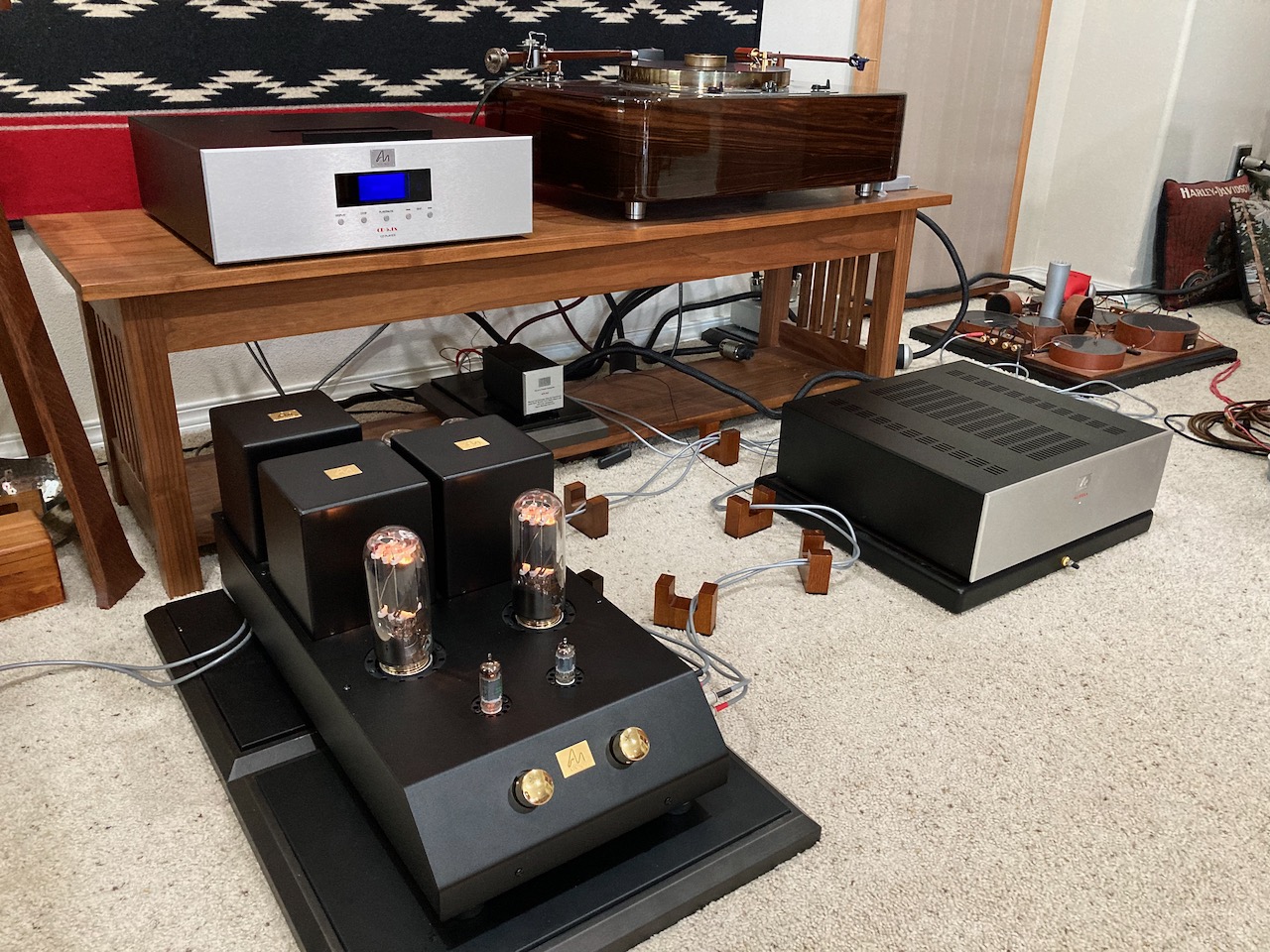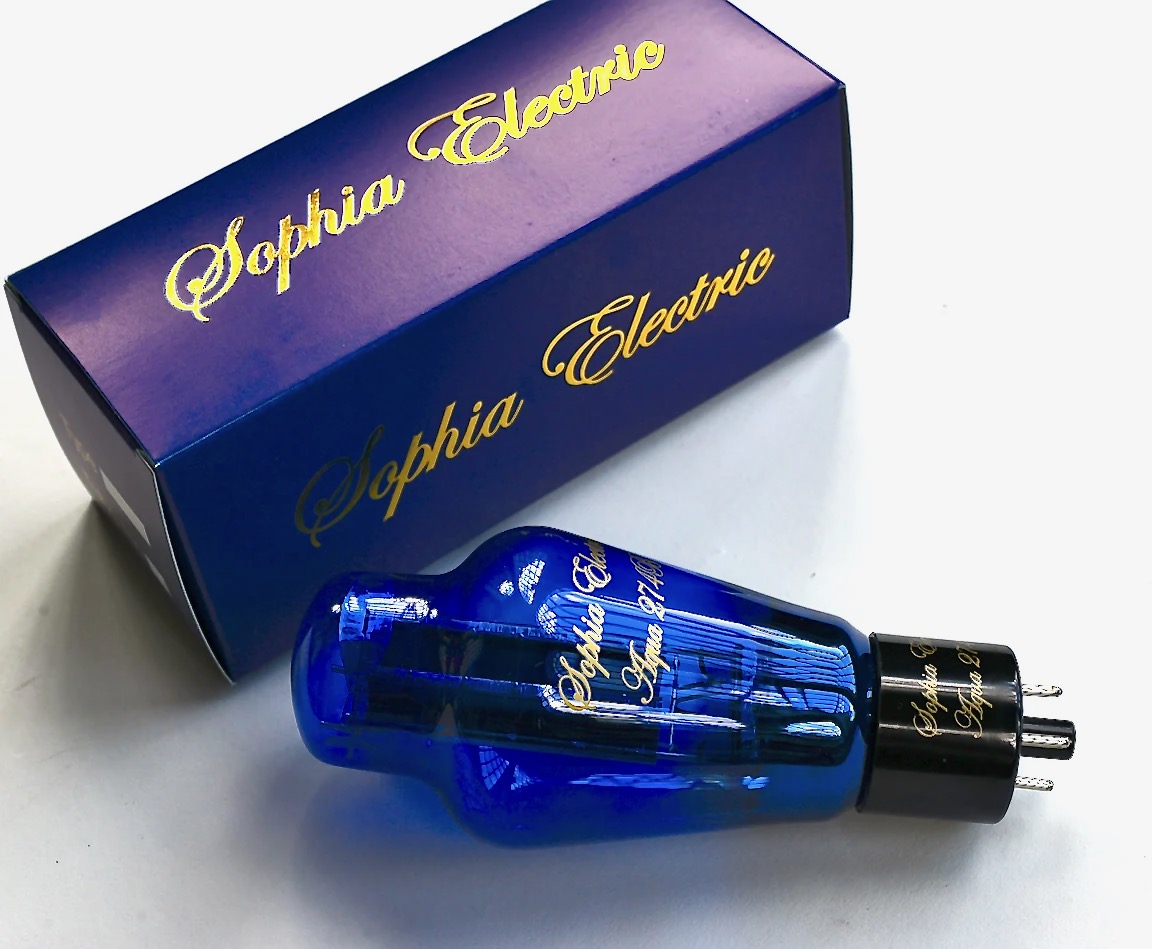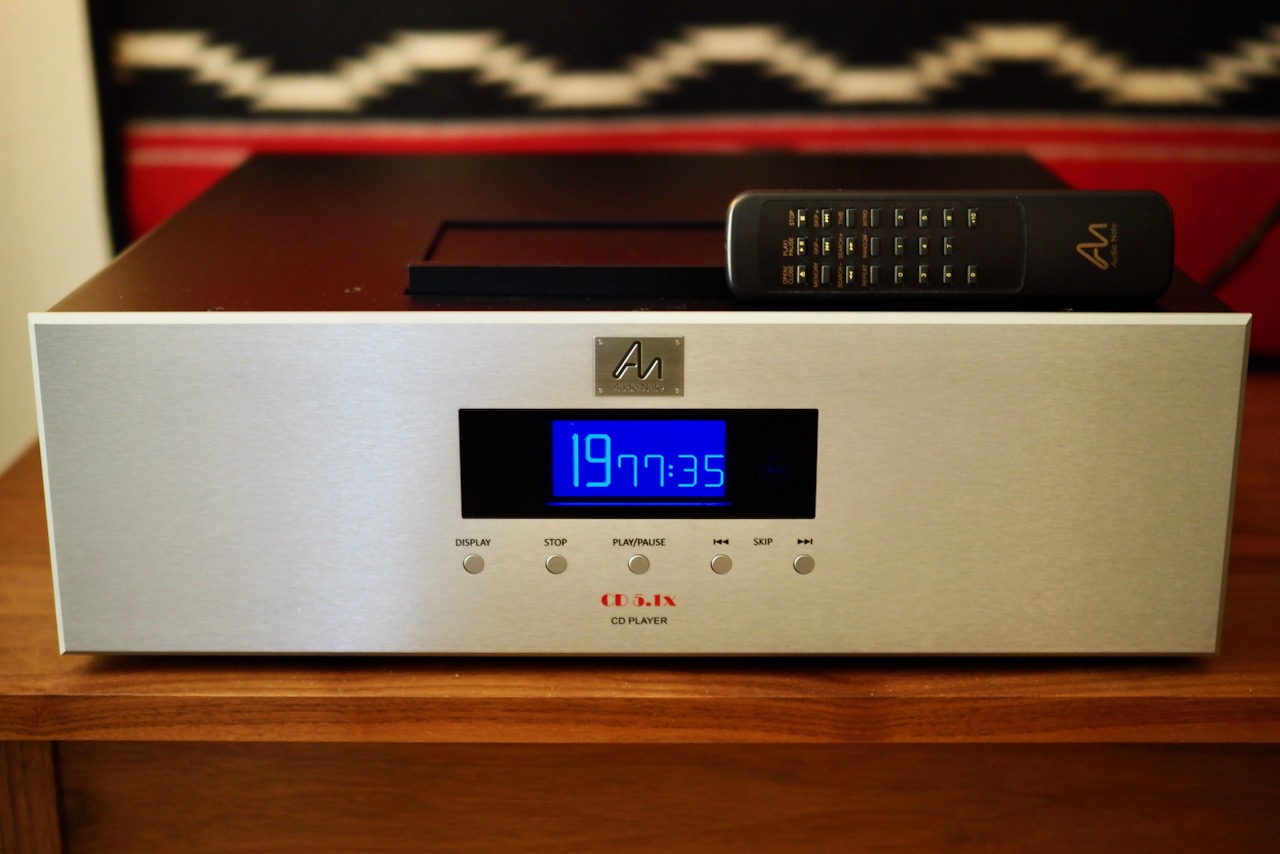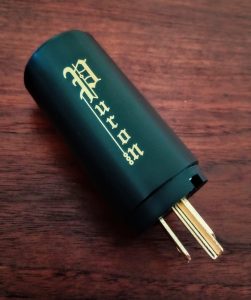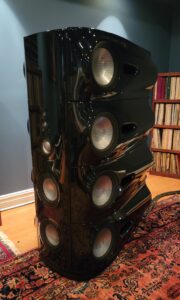Welcome to Hanze HiFi!
I always enjoy telling you about the people behind high-performance audio products and HiFi shops, as quite often they are the most insightful and informed of all enthusiasts about HiFi, telling us about new and exciting audio advancements, and possessing a zeal and vision that drives audio performance to that next level, enriching our HiFi hobby, our music listening, and our lives in the process.

Hanze HiFi in Zwolle, Netherlands.
Such are the people that are Hanze HiFi, located in the historic and picturesque city of Zwolle, Netherlands. Hanze HiFi is the sort of HiFi business that every audio enthusiast wished was just around the corner from their home.

Hanze HiFi selfie with Jaap (technician, left), Johan (owner, center), and Alexander (sales, right).
Hanze HiFi is an enthusiast HiFi company that hosts a large range of quality HiFi brands, and whose goal is to give their customers the most enjoyable home HiFi listening experience possible.
"We listen to you and your audio wishes, and together we will optimize your living room into the best setting for listening to your music, with the right components for you, for a sensational personalized listening experience."
Towards achieving that end, Hanze Hifi assists its customers in learning about and listening to the products that will provide them the type of performance they desire, at a price that fits within their HiFi budget, and then assists them in getting their new HiFi installed at home to achieve the best performance possible in their home listening space, with the intent of providing listening pleasure for many years to come.
That's an excellent recipe for happy and satisfied customers that most of us consumers in the enthusiast HiFi world can only dream about experiencing.
Many HiFi enthusiasts face the difficult challenge of sifting through all of the marketing of a multitude of HiFi brands, reading the reviews about those that they might be interested in, as they pursue a quest to find something they will truly enjoy listening to at home for the long term.
Alexander in the Hanze HiFi turntable room.
The reality is that there is so much information available these days that it can be a daunting challenge for a HiFi enthusiast to truly find the HiFi equipment that will make them happy in their home music listening over the long term.
Or as Hanze HiFi told me, "it makes it difficult to see the forest for the trees" in audio, so they assist their customers in narrowing down their choices to help them find those audio gems that will match their performance expectations and give them the best home listening experience possible, and in doing so provide them many years of satisfaction.
Hanze HiFi emphasizes the "art of listening" to assist their customers in experiencing and comparing various HiFi equipment so they can form their own opinions about performance, and how important those performance differences are to them, and whether those differences are worth the cost to them.
Hanze HiFi considers this selection and learning process to be the key aspect of providing customers a happy home listening experience and long-term satisfaction from their HiFi system.
To support the selection process Hanze HiFi provides opportunities for listening sessions in listening rooms which are acoustically equivalent to their home situation.
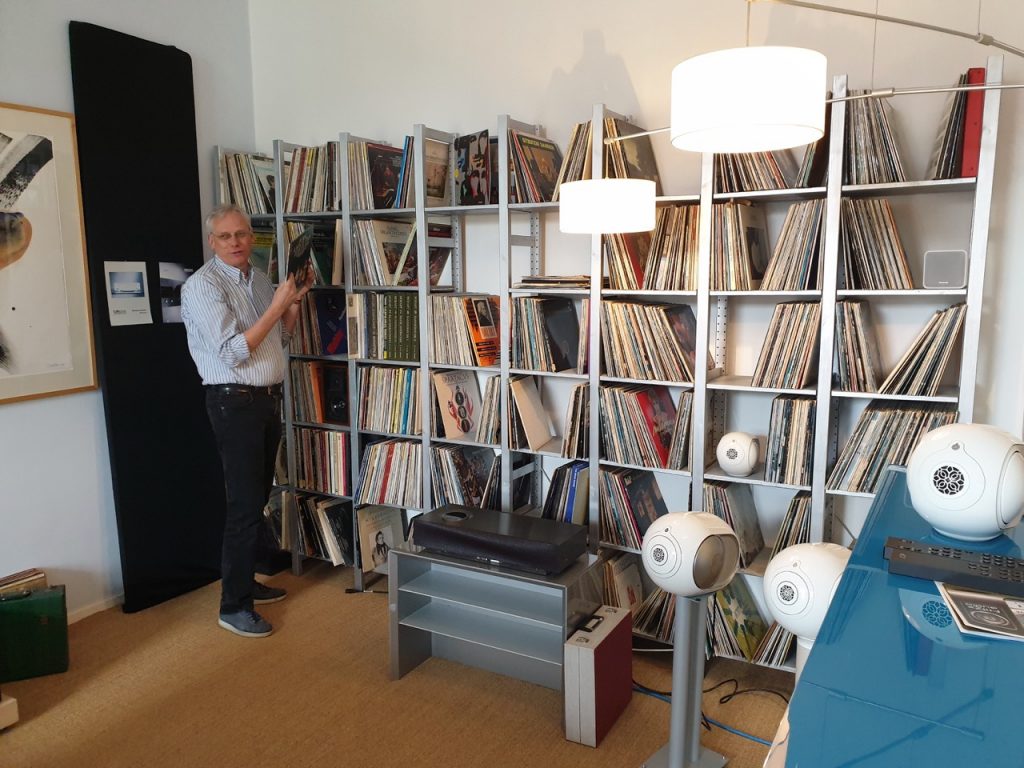
Owner Johan in Hanze HiFi's analog listening room.
Hanze HiFi installs HiFi systems into their listening rooms, with speakers and equipment that match the customers tastes, budgets, and desires, and a Hanze HiFi consultant assists the customer in gaining experience operating the various products during the listening sessions, so they can better understand what the products do and are capable of, and what attributes they value most.
Hanze HiFi believes that spending longer times in the listening rooms so that customers can truly understand their personal tastes and preferences in audio, shifts the customer from a quantitative gear-swapping listening experience that can be confusing, to a qualitative listening experience that truly helps them to discover whether the system being listened to is really what will make them happy for the long term with respect to price, operation, and the quality of the sound reproduction.
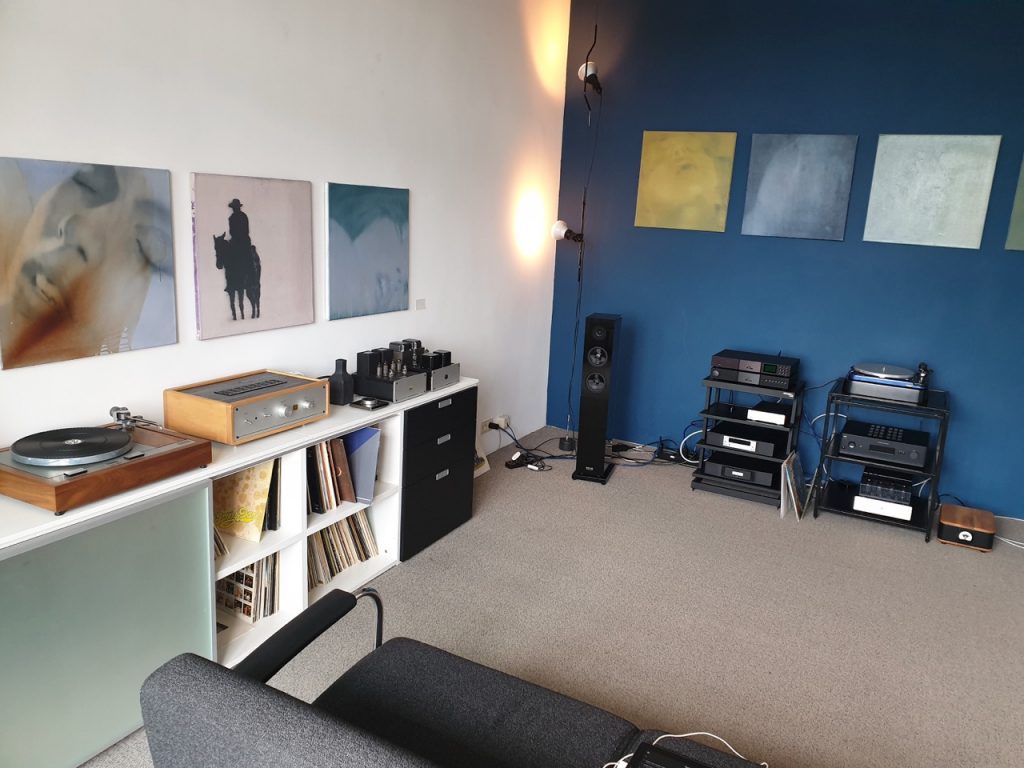
In addition to the consultants that can answer questions and help guide customers in discovering what truly makes them happy in audio, Hanze HiFi also has its own highly experienced technical service organization that can provide technical support to the customer over the long-term to ensure long-term audio happiness.
In the photo below you can see Jaap working on the most complex turntable from Thorens, the TD224 record changer.

Jaap working on the Thorens TD224 record changer.
Many of us attempt to go through this discovery process on our own, resulting in a lot of poor choices and a lot of wasted money, as we try to better understand what sort of HiFi system will make us happy for the long-term.
Hanze HiFi's staff assisting in this discovery process saves the customer time, money, and frustration, enabling them to focus in on finding the right HiFi system for theirs tastes and budget, and the presence and support of a talented service organization helps customers keep their HiFi's in tip-top shape over long term, ensuring long-term customer satisfaction.
Jaap Pees of Hanze HiFi
As one example of the long-term commitment Hanze HiFi makes to its customers, let me tell you about one of Hanze HiFi's technical experts, Jaap Pees (below).

If you are Thorens TD-124 turntable enthusiast like I am, you've probably already heard about Jaap's expertise related to classic studio & home turntables like the Thorens', Garrard's, and others.
Jaap has been working as a hi-fi audio technician for over 45 years now, with the last 20 years at Hanze HiFi. For the last 10 years Jaap has mainly focused his research on classic record players, how to best maintain them, and how to get the best performance out of these classic turntable designs, which continue to delight their owners with their high-performance music reproduction decades after their acquisition.
Like all thing's audio, eventually these classic turntables will require some maintenance or restoration to perform at their optimum level of performance.
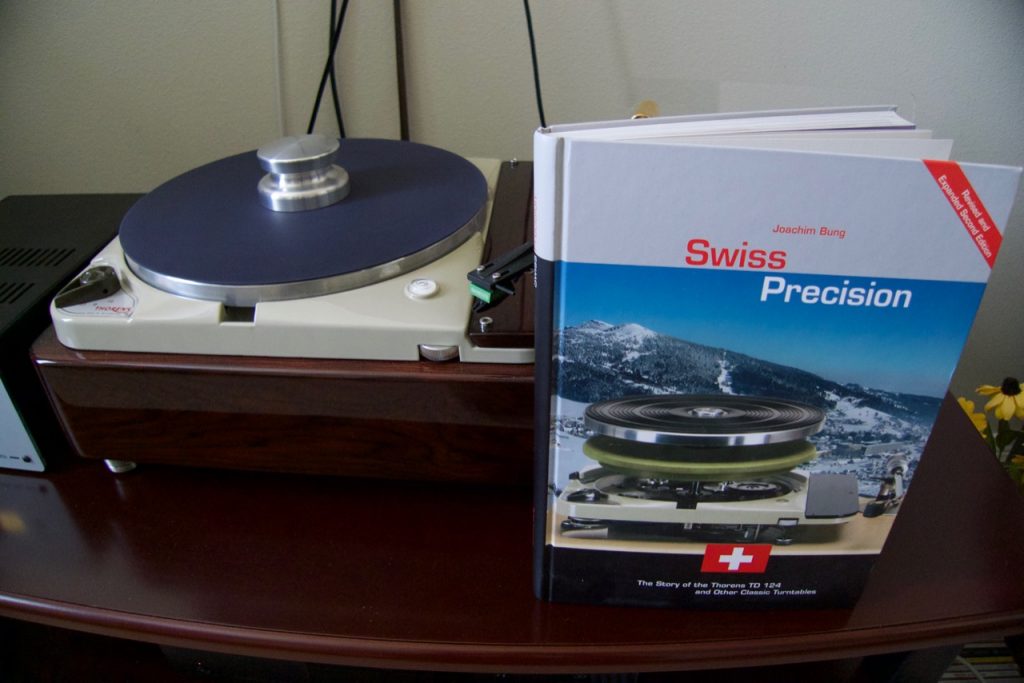
Jaap tells me his interest in record players was aroused when he went to overhaul a Thorens TD-124 for a customer and discovered that its special drive train was not so easy to restore due to its belt and intermediate wheel transmission, which many Thorens enthusiasts have difficulty with eventually.
If you are like me, you want to make sure your classic Thorens TD-124 turntable is running in tip-top shape, and Jaap can assist you with that, just like he has assisted me.
I bought a beautiful Artisan Fidelity Thorens TD-124 Statement turntable, with everything restored to perfection, and with many high-quality performance upgrades installed into it to get the best possible performance out of it.
Well, being the geeky classic HiFi enthusiast that I am, I was not as happy with my Thorens TD-124's performance as I had hoped to be, as it fell short of the sort of exceptional performance offered by my Classic Turntable Company / Artisan Fidelity Garrard 301 (which you can read about HERE), and I had been trying to figure out if there was a way to bridge that performance gap.
I had mentioned this goal to my pals on Facebook, and a couple of very knowledgeable individuals, Jaap Pees (Hanze HiFi) and Chris Harban (Woodsong Audio), responded and told me that it should be no problem to get the same level of performance out of my Thorens TD-124 that I get from my CTC Garrard 301, with just a few easy and relatively inexpensive changes consisting of a new platter adapter (Woodsong Audio), turntable mat (Spec Corporation), and a spring isolation kit for my Thorens TD-124's motor (Hanze Hifi).

I followed Jaap's and Chris' advice and was rather astounded by the magnitude of performance improvement provided by these three simple additions, which had put my Thorens TD-124 on a level of performance similar to my hot-rodded Garrard 301, which you can read all about in the review HERE.
Jaap also suggested that a Hanze HiFi HAT Turntable Power Supply would improve the performance of my Thorens TD-124 even further, and asked me if I'd like to give one a listen and review it for Positive Feedback.
"Yes, indeed I would!" was my reply, so Jaap sent me a Hanze HiFi HAT Turntable Power Supply to listen to and review for Positive Feedback.
Outboard Turntable Power Supplies
Before I discuss the Hanze HiFi HAT Turntable Power Supply in detail, let me offer a basic primer on why you might want to consider using an outboard power supply for your turntable.
I think one of the best ways to explain how an outboard power supply can make a turntable sound better is to talk about how a turntable works to play back music from a vinyl record.
Hint: It's all about vibrations.
First of all, when you and your band go to the recording studio, you play your music in front of microphones, and microphones work much like your own ears in the way they respond to vibrations from music.
Your eardrum vibrates as it is struck by the musical waveforms, and those vibrations are converted to an electrical signal that is interpreted by your brain as music.
Similarly, when a microphone's internal diaphragm is struck by musical waveforms it vibrates and turns those vibrations into an electrical signal, which are then encoded onto analog tape (or converted to digital media).
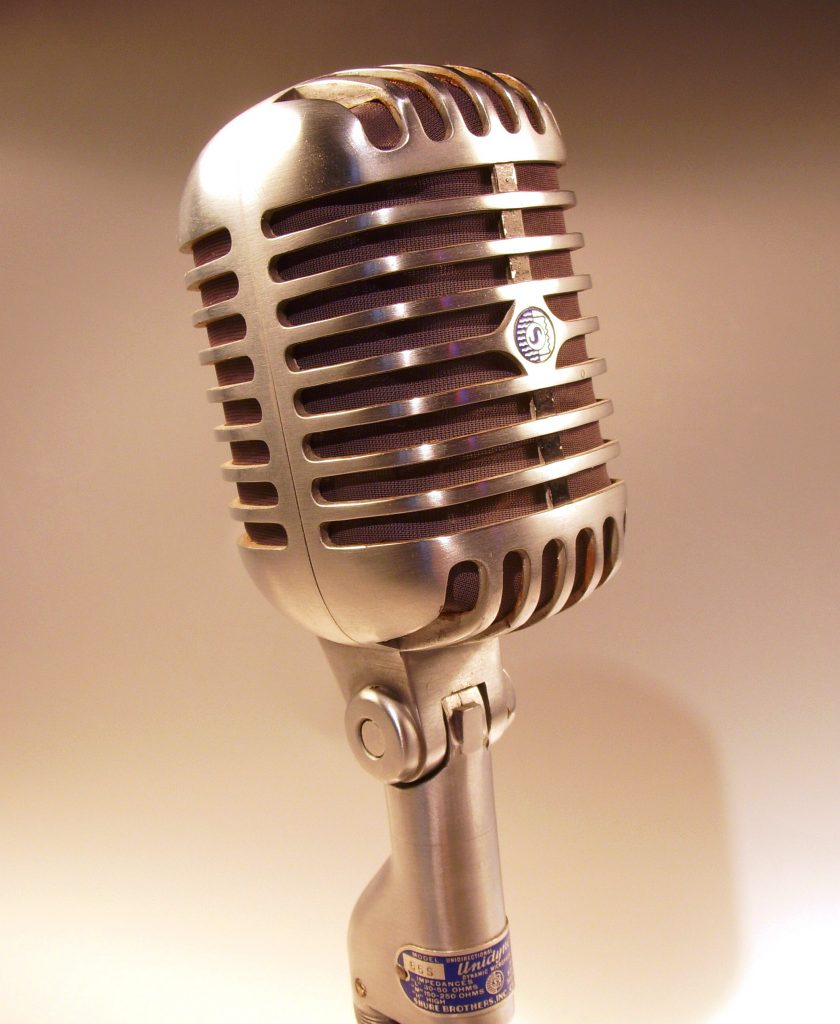
1951 Shure 55S microphone, photo courtesy of Wikipedia Creative Commons. Photo by Holger Ellgaard.
So, as the musicians play the music, the vibrations of the music are converted by microphones into an electrical signal that is stored on analog tape or digital media, then the electrical signal from the master is sent to a cutting lathe where the cutter head converts the electrical signal back into vibrations—or modulations—as it cuts a continuous groove into the lacquer. A "metal master" is made from the lacquer, a "mother" is then made from the metal master, a "stamper" is made from the mother, and then vinyl records are made using the stamper. I've simplified the process a lot, but hopefully you get the idea.
So now you've got your record in your hands, and you place your record on your turntable, and then lower the stylus, which is vibrated by the modulations in the record's groove, and turns those vibrations back into an electrical signal that you hear as music coming from your HiFi system. Again, I've simplified the playback process quite a lot, but you get the idea.
Ok, now you have the basics of making records and of record playback, which boils down to being all about turning the "good vibrations" of music into an electrical signal and then back again into music.
So, now back to our original question of why you might want to consider using an outboard power supply for your turntable—why would you want to do that?
The short answer is to reduce or eliminate the non-musical "bad vibrations" from the mains power supply and the turntable motor that degrades your turntable's cartridge's performance, as any fidelity lost at the source can't be recovered down the line by your audio system electronics.
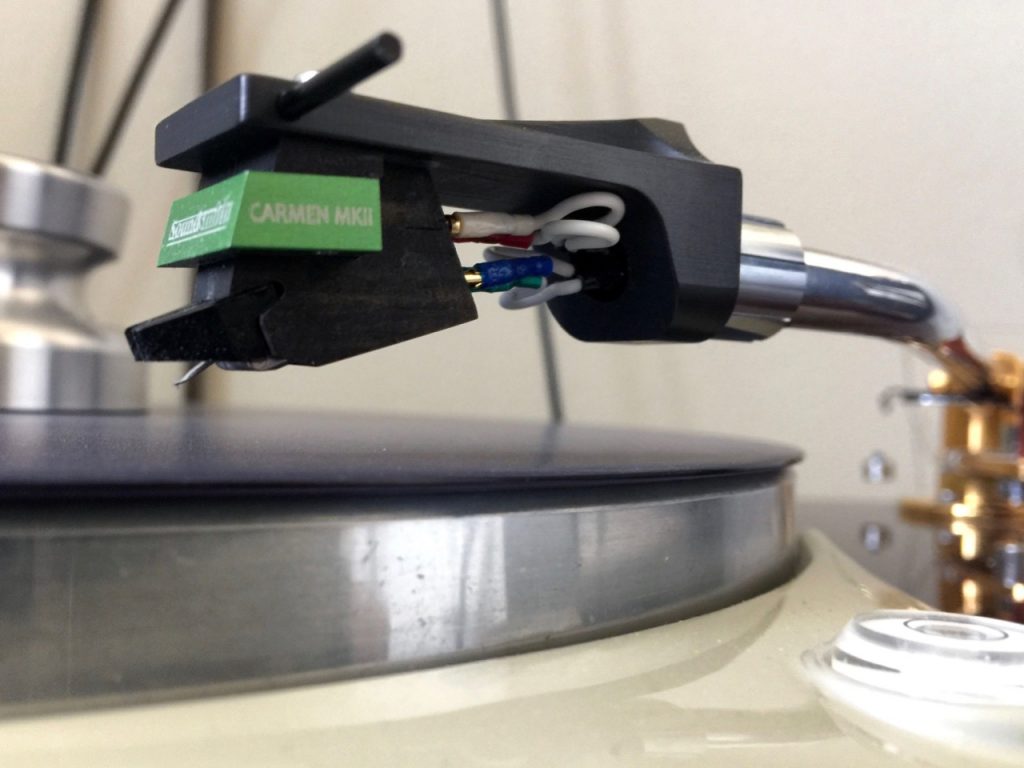
The phonograph cartridge picks up all vibrations, whether they are from the modulation in the record's groove, or from footfalls or floor-borne vibrations, from the mains supply, or from the turntable motor itself.
All of these sources of non-musical vibrations degrade the signal-to-noise ratio of the music signal at the phonograph cartridge, lowering the fidelity of the music you hear from your HiFi.
So, the moral of this story is that phonograph cartridges are very sensitive to vibration, and an outboard turntable power supply reduces vibrations that can be transmitted to the turntable's phonograph cartridge, thus improving the quality of the sound.
Most of you reading this article are familiar with the idea of placing a turntable on a vibration reducing stand or isolation footers (or both) to reduce vibrations from footfalls or other floor-borne vibrations, but other major sources of vibration—the mains voltage & turntable motor itself—can be addressed by the addition of an outboard power supply, which provides the turntable motor with a regenerated low-noise AC supply, and allows you to lower the line voltage going to the turntable motor, which lowers the amount of vibration from the motor, and results in an improvement to the sound quality due to better phonograph cartridge performance.
The Hanze HiFi HAT Turntable Power Supply
The Hanze HiFi HAT Turntable Power Supply is a substantial piece of finely crafted HiFi electronics measuring 8¾ inches wide, by 5 inches high, and is 12 inches deep, and weighs in at approximately 11 pounds / 5 kilograms on my utility scale.
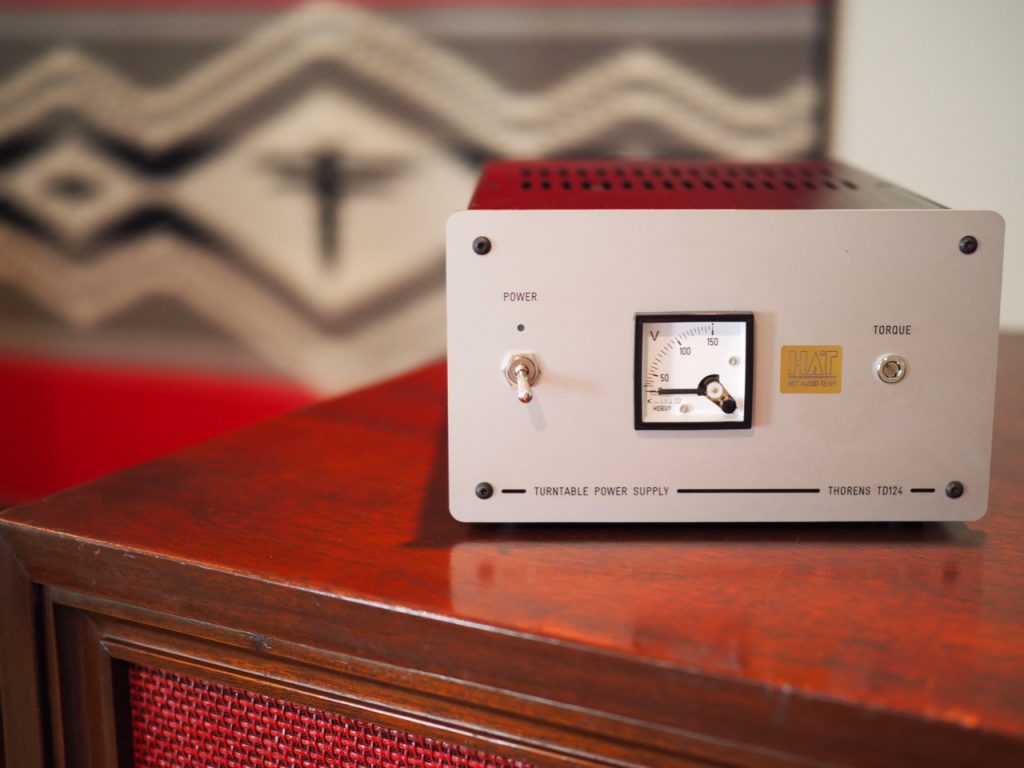
The casework for the HAT turntable power supply is sturdy aluminum plate, with the front panel approximately 4mm in thickness, the side panels slightly less than 4mm in thickness, and back, top, and bottom panels approximately 3mm in thickness, all held together by machine screws.
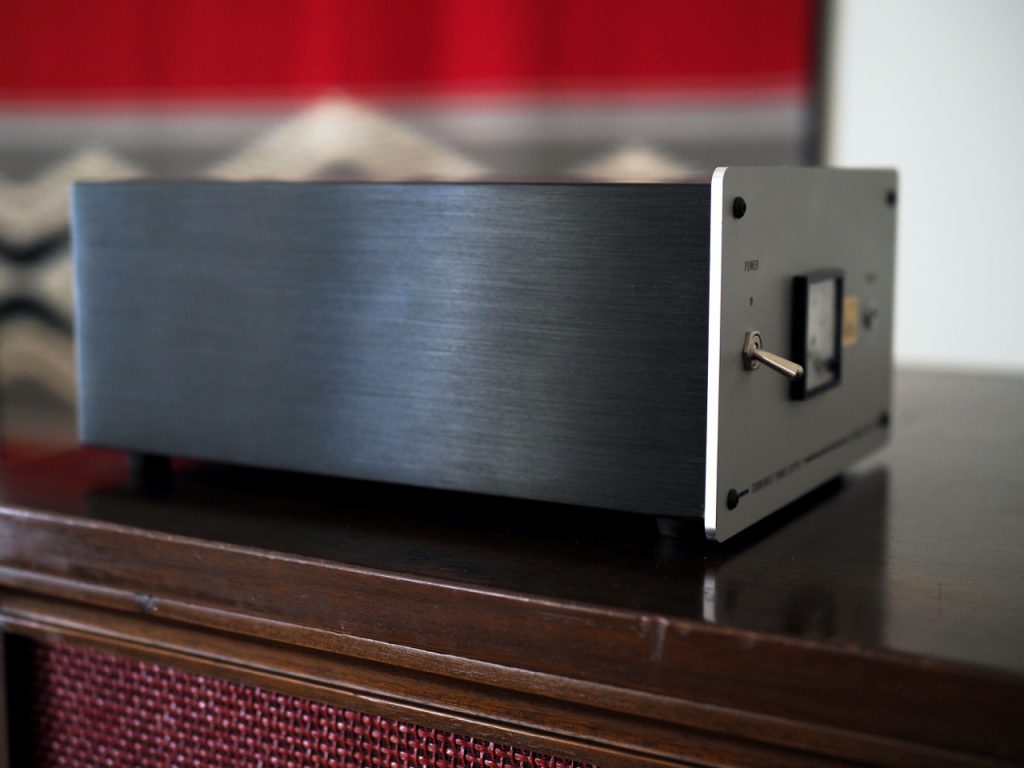
The HAT turntable power supply is built to a level of ruggedness and quality that many amplifiers would be jealous of.

From left to right on the front panel (above) you see the power switch, voltage meter, and torque adjustment potentiometer.
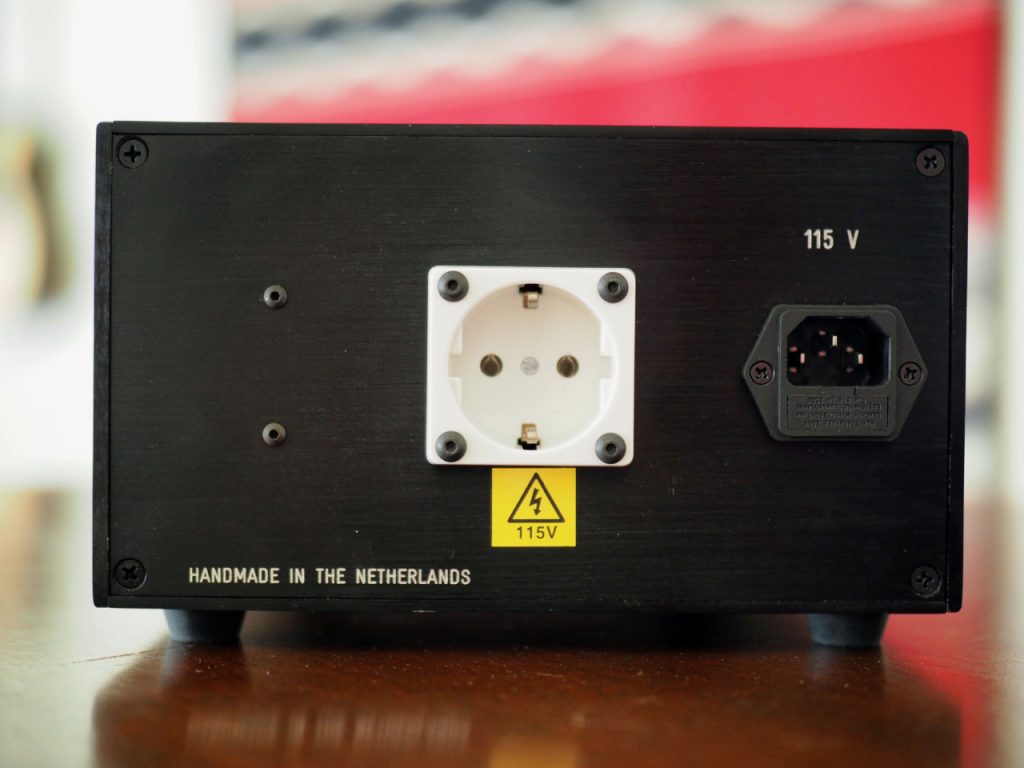
On the back panel you can see the center plug—a European-style Type F socket—that outputs AC to the turntable, and on the right side is a standard North American IEC male AC inlet plug for the wall AC.
In the particular unit sent for review, the central plug is a European-style Type F socket, as this is the first HAT Turntable Power Supply that was adapted for the 60Hz / 120-volt North American power grid from the normal European version that Hanze HiFi offers, but future models shipped to North America will feature standard North American IEC male AC inlet plugs.
For this review I'll be using a plug-in adapter so I can use my turntable AC cable with a North American termination with the European-style Type F socket.
Now allow me tell you a little about how the Hanze HiFi HAT Turntable Power Supply came about.
Jaap told me, "Since all vibrations in record players start at the motor, I started looking for books explaining how the fractional motors work, as these are the kind of motors that were used in turntables. During this investigation it became clear to me that the motor in the turntable is primarily responsible for the speed and the vibrations."
"To be able to measure this, I went looking for a reference in the vibration measurement area and ended up with HP FFT signal analyzer and Bruel & Kjaer measuring equipment. Since industry has already made many measurements of standard electric motors, I also applied these techniques to the fractional motors in turntables."
"The vintage players mainly use three types of motors: the shaded-pole motor, the hysteresis-synchronous motor, and the capacitor induction motor. It is probably too much to explain the operation of each of these motors here, but in the Thorens TD124, the Garrard 301/401 (below), and the Lenco L75, the shaded-pole motors are used."
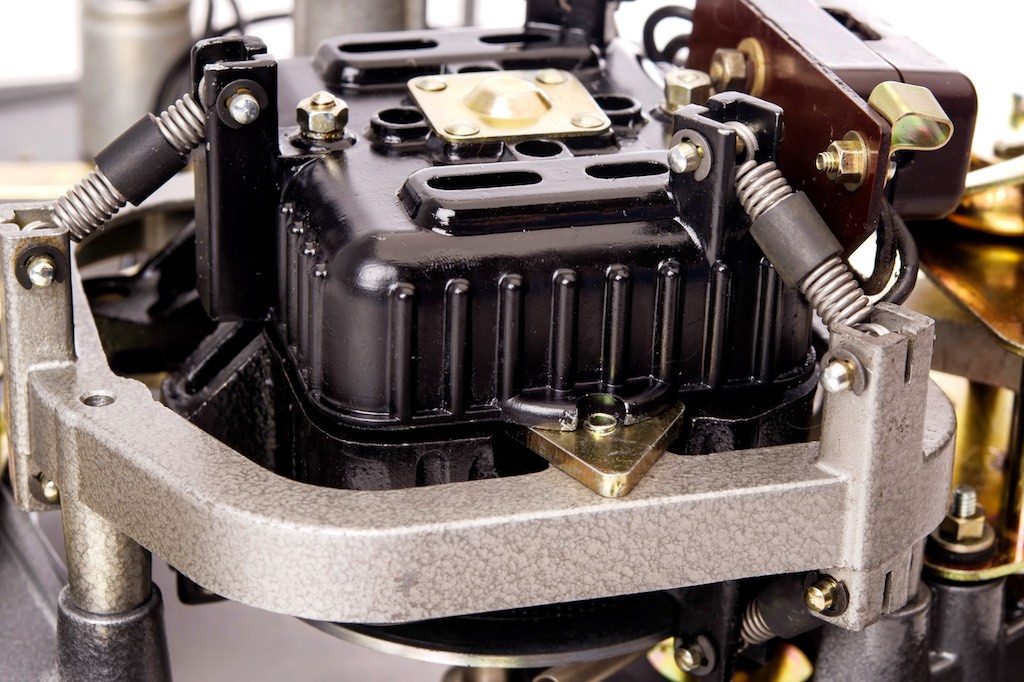
"What is important to know is that the speed is determined by the voltage, frequency and load offered."
"Previous research on standard motors has already shown that the quality of the mains voltage offered influences the degree of vibration and temperature of these motors, so we decided to do some research into this and to measure it, and more importantly determine how it affects the sound quality."
"Together with my friend Richard—together we form the Audio Team—we started to experiment with turntable power supplies for induction motors, as we already knew how much influence power supplies had on our tube amplifiers."
"The first results were really shocking, and we certainly did not expect this. A better power supply translated into blacker backgrounds, better low-level resolution, the grainy sound in voices was gone, and the soundstage was more stable and with better definition."
"The main reason for this I think is because the mains supply has been contaminated for many years, and there are many more frequencies present in it than just the 50 or 60Hz, in the form of very strong harmonics."
"Measurements that I have done show that these can go up to 3kHz, and the voltage and frequency also varies. By offering a clean and stable newly generated voltage, the motor will vibrate less and the speed will be more constant."
"Do not forget that the turntable is dealing with vibrations that are transmitted through the chassis to the tonearm arm as well as via a belt—and the intermediate wheel—to the platter, and thus there is influence on the speed in the form of modulation in a kind of frequency wobble, called wow and flutter."
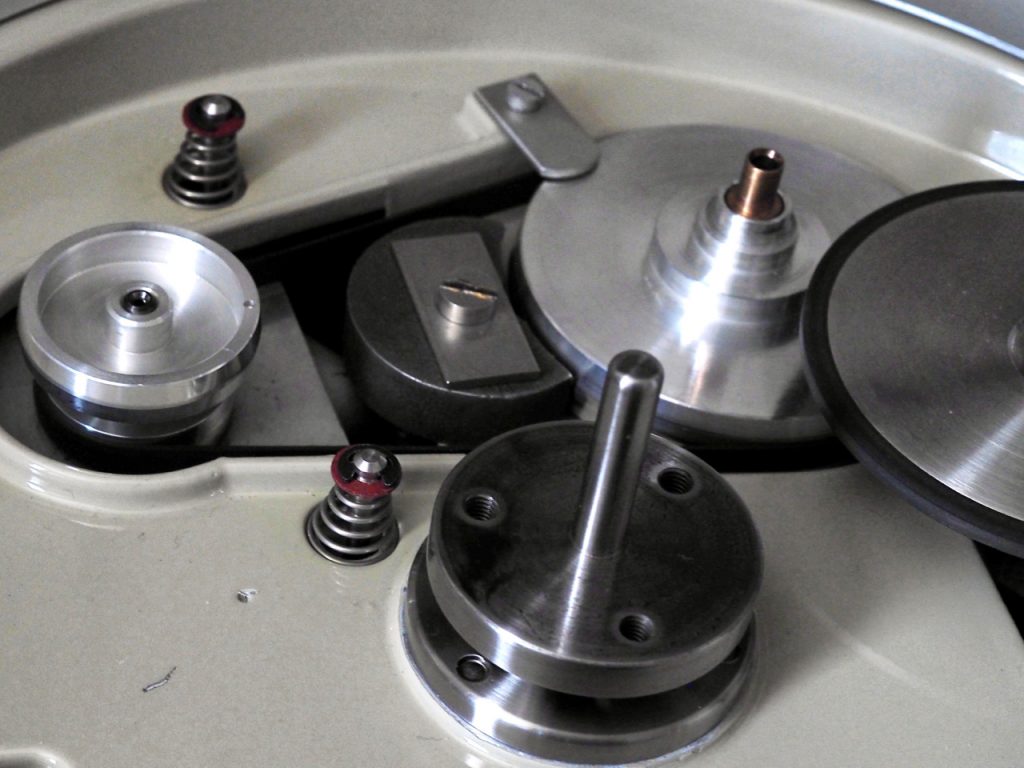
"The former can be suppressed by using optimal decoupling (above, note the springs on the motor mounts), but the latter is a lot more difficult. The motor is made up of a fixed part, the stator that takes care of the magnetic field, which causes the so-called rotor to rotate. This rotor is often directly coupled via the intermediate wheel to the platter or, as with the Thorens TD124, via a belt to the intermediate wheel."
"Here it is already determined how quiet and stable the record player will be and it is therefore logical to ensure that the motor is optimally controlled. In the optimum theoretical case we have to deal with two types of vibrations, the first of the rotating rotor speed between 23 and 30Hz, depending on the mains frequency, and the voltage."
"The second most disturbing vibration is the so-called "two times the mains frequency vibration," 100Hz at 50Hz, or 120Hz at 60Hz. It's probably too much to go into the explanation here on how it arises, but it is always present with motors that are fed from a single-phase mains supply."
"However, not only a 50 or 60Hz sine wave is offered, but also the derived harmonics that are very strongly present. These cause extra vibrations, and an unstable speed that is partly transferred by the rotor to the intermediate wheel or belt."
"There is some damping here for the vibrations, but not for the wow & flutter speed variations. The plateau partially compensates for this, but wow & flutter spectral measurements show that they are still present.
For speed control, the Thorens TD124 and Garrard 301/401 use an eddy current control that also introduces additional vibrations. The more it slows down, the more the vibrations."
"By setting the output voltage of the power supply a little lower, this control does not have to work as strongly and therefore produces fewer vibrations. However, an output voltage that is too low is at the expense of the torque, which does not benefit the sound."




